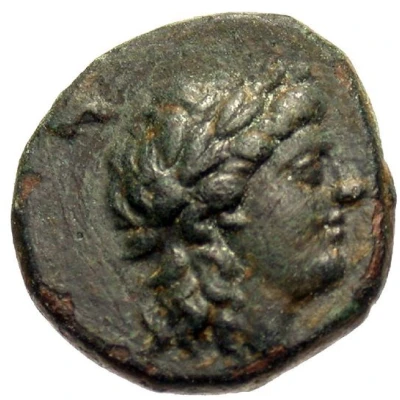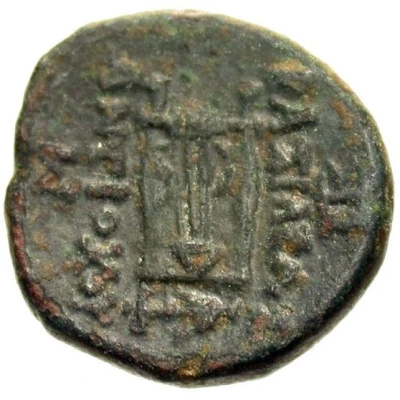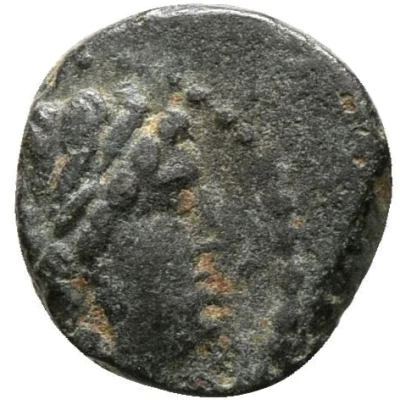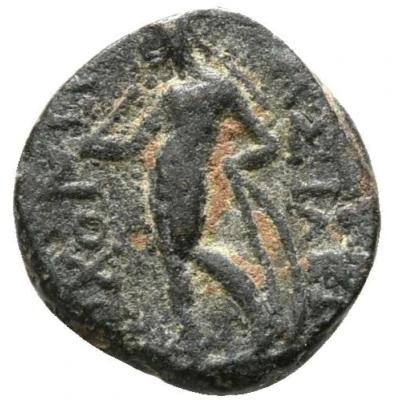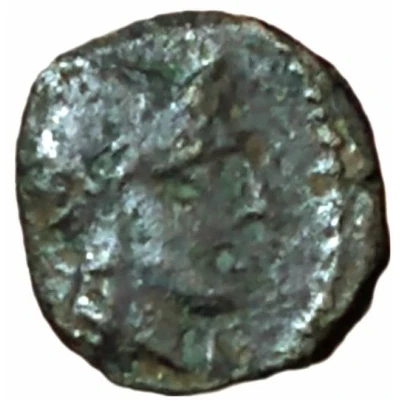
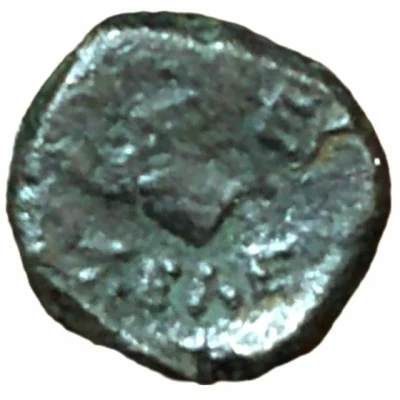

Half Chalkon - Seleukos II Kallinikos 246 BC - 226 BC
| Bronze | 1.4 g | 11.5 mm |
| Issuer | Seleucid Empire (Seleucid Empire (305 BC - 64 BC)) |
|---|---|
| King | Seleukos II Kallinikos (246 BC - 225 BC) |
| Type | Standard circulation coin |
| Years | 246 BC - 226 BC |
| Value | Hemichalkon (1⁄96) |
| Currency | Drachm |
| Composition | Bronze |
| Weight | 1.4 g |
| Diameter | 11.5 mm |
| Shape | Round (irregular) |
| Technique | Hammered |
| Orientation | Variable alignment ↺ |
| Demonetized | Yes |
| Updated | 2024-10-10 |
| Numista | N#415496 |
|---|---|
| Rarity index | 97% |
Reverse
Forepart of horse to left; monogram in left field
Script: Greek
Lettering:
ΒΑΣΙΛEYΣ
ΣΕΛΕ
Translation: King Seleukos (II, Kallinikos)
Comment
This new fractional bronze type seems certainly to be a previously unknown type of Seleukos II Kallinikos, the fourth ruler of the Seleukid dynasty. It shares its obverse type and the controls found on the reverse with SC 700, an issue of Seleukos II attributed under the heading of probably Antioch (but whose find spots, according to the notes in SC, could support an origin in northern Syria or Mesopotamia). The abbreviated legend, if it reads as described here, is also recorded for Seleukos II, and it would seem that under this king the horse and cavalryman received particular prominence as coin types, perhaps to more closely associate Seleukos and his horse with the famous steeds and exploits of both his grandfather, Seleukos I, and Alexander the Great.
Interesting fact
One interesting fact about the Half Chalkon coin of Seleukos II Kallinikos is that it features the first known use of a portrait of a Seleucid king on a coin, which was a departure from the traditional depiction of deities and mythological figures on Greek coins. This innovation in coinage design helped to establish the Seleucid Empire's distinct identity and promote the cult of the ruling dynasty.
